by Enno Lenze, guest author.
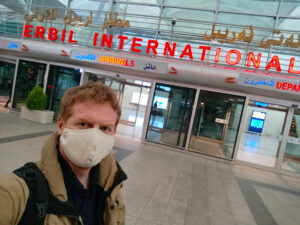
In the dark of the night, the plane touches down in thick fog next to attack helicopters, spy planes and under the vigilant eyes of the intelligence services. Even before the doors are open, vehicles come across the runway towards the plane, people jump out nervously and shout around. Heavily armed special forces are standing in the terminal, their darkened-window Jeeps are waiting at the door. At high speed it goes off the airport premises, passing an armoured Truck (MRAP) which secures the driveway. Northern Iraq smells like adventure, doesn’t it?
Well, not really. But that’s how it might seem if you’re in an area like this for the first time. If you have been here more often, you perceive the landing in Erbil, the capital of the autonomous region of Kurdistan in the north of Iraq, differently: In the fog, we landed next to the old runway, which the Americans use as a parking lot. The ground crew hurries to unload the baggage and the soldiers at the gate greet you with a cheerful “Welcome to Kurdistan!”, and help you get your luggage off the conveyor belt. Outside are the usual big cabs with their crazy drivers. And as you leave the airport, you think to yourself “Oh my, this broken MRAP has been parked here for years already”. Kurdistan welcomes you, with the smell of tea and Baklava!
Strong U.S. military presence in Iraqi airspace

On January 3rd, 2020, the Iranian officer Qasem Soleimani was killed by US forces in Baghdad. He was responsible for leading pro-Iranian groups and militias abroad. As the anniversary of his assassination approaches, attacks on US facilities are feared worldwide. There has been a saber rattling on the Iranian and US sides for days.
There had been several reports of increased presence of US military in Iraqi airspace in recent days. Experts and self-proclaimed experts in Western countries are debating whether the amount of planes was normal, or worth some attention. From a distance, it’s hard to tell. While there are quite a few websites today that allow you to track planes in real time, they do have major gaps. The system of the websites is very simple: airplanes send, so to speak ‘voluntarily’, some data: Their identification, altitude, direction, speed, position and some more. All of these can be received and processed with devices available for as little as 50€. If enough people on the ground record and share such data, a rather comprehensive, global picture can be constructed from these data sets. However, there seems to be a gaping hole of recording around the Iraqi-Turkish-Syrian border. No one seems to operate such a receiver around there. In addition to that, many of these websites are voluntarily filtering out several planes, especially military or smaller private jets. This data is enough as an indicator, but not qualify as a base for solid research.
Most airplanes will have their transponders turned on and sending information even above areas of crisis, conflict and war. It isn’t a secret they’re there, and they would be visible on radar screens one way or another. Stealth bombers even have additional reflecting surfaces mounted onto them to make them more visible to radar while they are not in action.
So, how is the situation in Kurdistan-Iraq? Bomb-craters as far as the eye can see, people riding donkeys and a few tents sprinkled in between? Think again. In large cities you will find shopping malls, cafés, amusement parks and much more. There are also the old town buildings, like Erbil’s citadel, inhabited without interruption since more than six thousand years. In addition, you will find museums telling the story of the fight against Saddam and the IS, about craftsmanship, the society of Assyria and many other topics. Kurdish society is open-minded and friendly, and appreciates what it has carved out for itself in the past decades. There are two million refugees living in the Kurdish regions in northern Iraq, in addition to the five million residents – one million from Syria, one from other areas of Iraq. Between “Iraquistan” and “Kurdistan”, a sort of domestic border has been drawn. There are different visa, different languages, different police and separate armed forces. Politically, each region has its own parliament and government. Iraqi laws, for example regulating alcohol consumption and short skirts, do no not apply to Kurdistan.
But What About Corona?
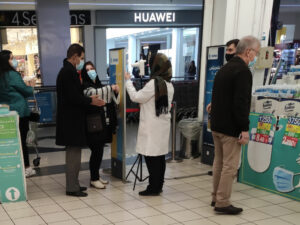
“Corona? It doesn’t stand a chance in our atmosphere”, a man says, laughing. Most people are not wearing a mask outside, inside larger stores and Malls, an estimate of 60-75 percent do. Presumably, Kurdistan has been permeated thoroughly by the corona virus, and it is now endemic to society. Many tell stories of cases in their families. The number of unreported cases is hard to even estimate. There is no central registration of fatalities. When someone dies in a village, these deaths are often not even being recorded. After all, the family is aware – why inform an administration, that did not even know the deceased?
However, there is a lot of temperature-measurement and disinfecting going on: Be it in the hotels, the consulates, or in larger stores, it is always required to disinfect your hands and have your temperature taken, under observation. Is it helping? Nobody can say for sure
Children. Children everywhere
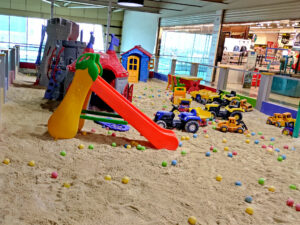
You are also quick to realize the high importance of children in this society. The sad history of Kurdistan is full of orphans that had to be distributed quickly. Most of them ended up with relatives. When the IS wiped out entire villages in the recent past, there were often children without any distant relatives left behind. These were partly taken in by the soldiers or intelligence officers of the forces that freed them. As recent as 2017 I met a commander of the intelligence service who had just picked up seven children, homeless and without relatives, some of whom didn’t even know their own names, as they had been too young when IS abducted them. On his way home he told me “I’m gonna get in trouble again. My wife agrees with me in that we have to help. But to come home again with seven children? It’s hard. We have three biological children and three we took in”. Six Children – three unexpected and without preparation. Unimaginable in Germany. And now, seven more – if only temporary. Only one of the seven saved children ended up staying with them, so now they had seven. The rest were distributed among colleagues. The reactions were similar. First, there is the obligation to help, then there is the question of how to help. One of his colleagues was 21 years old, he had been married for six months. He took two children in. However, expectations around here are to have children of your own in addition. Today he actually has two, as well as the two saved ones. There is no money to be received for this, you have to get by on your own. But the community is helping. Everyone has the same problem, and especially the soldiers know that one day it might be their children who need the help.
If you happen to meet these children one year later, they are joyfully running around, trying to paint on dogs or chasing goats across the fields. Normal crazy childhoods around here. No external signs of problems. There are a large number of children running around in public, as well. Nobody is feeling annoyed by them, someone will be watching over them after all. If a child stumbles and fall, someone will pick up and comfort them, no matter if it’s their own child, or not. It is a community life full of genuine compassion. The children in larger cities are used to the sight of foreigners: Soldiers, petrol company employees, NGO members and a few tourists. Still, it is possible to involuntarily become an attraction yourself. Especially blond women will find themselves being stared at in a fascinated way by children. A girl explained to me, that while she obviously knew women who dyed their hair blond, only the Ice Princess from ‘Frozen’ had genuine blond hair. This way she was able to meet her idol, so to speak.
Last evening, after our landing at dawn and three hours of sleep, I found myself to be the object of interest of two children. They kept a respectful distance of around one meter, and stared at me. After a while, they started commenting on what I might be doing, and why. Finally, they decided to get the mothers phone, to properly document my behaviour. The mother came over to apologize and was about to take the children back with her, but I explained to her that I actually didn’t mind. In the end we came to an agreement: Each of them was allowed to call one friend and show me to them, if afterwards they would let me finish my Baklava in peace. They were excited about the idea and wanted to call their uncle, since I looked like a friend of his. Red hair can occasionally be found around here, especially with Yezidi people (an old religion in this region). I was preparing myself for a fun talk with a shaking mobile camera and a person on the other side not quite sure what to make of the situation. But the story had a twist.
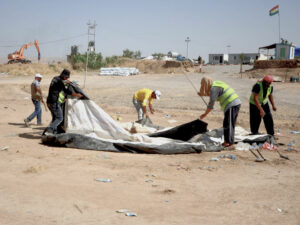
The man on the other side looked surprised and inspected me closely. Then he teared up, and started to speak hastily “We know each other! Look! I still have that picture of the two of us! Mosul 2014!”
I have never seen the picture before, but yeah: It was me and him, talking. In the middle of the desert, somewhere in the nowhere. Behind us: A digger and a truck in the process of unloading tents. I knew immediately what this was about: the reception camp, built by Acted, a French NGO, that had immediately started construction after IS had assaulted Mosul. Before the large NGO’s got moving, the smaller ones already had. 24 hours after the attack, the first christian NGO’s from France had their boots on the ground. The other ones followed gradually. The camp was basically constructed out of the desert soil – out of nothing, in the middle of nothing. On one end, people were dragging plumbing hoses and were connecting them to the sewers, on the other someone was crawling around in a power line tower, to install a diversion. People were arriving consistently, by foot, by car, on diggers and trucks.
And right in the middle, the man I now was seeing again. Back then, he told me the story of what had occurred in Mosul, and how he barely managed to escape with his close family. I had only spent around an hour in this camp, as we were on the path to Mosul until we arrived in the last outskirts the IS had not yet conquered. But until now I had no idea, what effect my visit there have had on him. I was the first journalist these people met after their escape. The IS had not yet taken over Mosul completely. Their reaction had been “If even the freelancers from Germany are here already, all the others must be here as well! The world is watching! We will get help!” This gave them hope. However, reality turned out to be different.
First, the Turkish army came to aid the Kurdish forces (the Peshmerga). Within weeks, they arrived with weapons, ammunition and instructors. Later on, the Turkish government allowed the Peshmerga to transfer troops from Kurdistan-Iraq to the Kurdish areas of Syria through Turkey. Here, they came to the aid of the local YPG (Kurdish freedom fighters who had already been involved in the fight against Assad) in the defense of the City of Kobani against the IS.
A little while later, the Americans came to support the Iraqi Kurds and took heavy criticism for it. After that, German weapons followed. Israel simply never made their support public, the fighter jets from several European countries didn’t get much attention, either. But the large, global help never came. As an old Kurdish saying goes: “We have no friends, but the mountains”.
The man on the other side of the call was just as surprised to see me as I was. Neither of us had expected to hear from the other ever again. And the children had made it possible. Had I chased them away from the start because they annoyed me, I never would have heard how his story continued.
Kurdish Nights
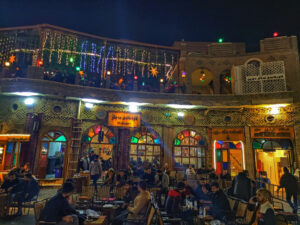
After dark, the US airbase in Erbil starts to get to work. US planes not only start from here, but also from distant Qatar. On this evening alone, there had been more than a dozen. A chat with the American security guard should prove to be enlightening. In the evening, we sat in front of a decommissioned US school bus, which is now serving as The Bus Café. The view: Erbil Air Base and several planes.
“Another Beechie! We have quite a few of these now. They are not that expensive.”, the Lady sitting across says. She is talking about the reconnaissance planes based on the Beechcraft King Air model. A small propeller plane full of antennae. Basically, just a big flying antenna, whose data can be processed elsewhere. They can scan communications on the ground, all the way to hand-held comms. During the night, five of them have been taking off. A lot more than usual.
“Why do you still have the others up there anyway?”, I ask. The answer is simple: “Larger antennae, more computing power, and sometimes there is a crew that can intervene on the spot in the airplane”. As the five smaller ones are not sufficient tonight, they are joined by two Bombardier E-11A. These are special planes based on private jets. But even these turned out not to be enough, and an eighth spy plane appeared in the sky: A Boeing RC135W Rivet Joint, as big as a commercial Airline Plane. They have been in action for over 50 years, in varying roles. Expensive in construction as well as maintenance. This is something you only deploy when necessary. Several refuelling planes start from Qatar and circle above Iraq, some of them all the way up north to Erbil. They can’t be seen or heard from the ground, as they are flying too high. What we do hear though, are the American and Dutch helicopters. But these are nothing unusual. Some of them will be supporting the Kurdish forces and are on the way to a mission, some of them will be supplying their outposts further away.
There had been rumours, the Americans had recently cleared a cave full of IS terrorists at Makhmour, one hour by car away from here. “I think that intel is a little above your pay check”, my counterpart replies. A common phrase in the US, meaning “That’s none of your business, but of the people higher up than you”. I only get answers to questions where I have seen something for myself, and can ask accurately enough.
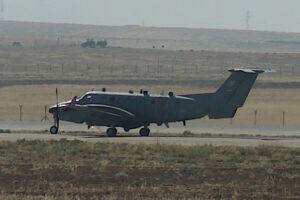
Further north, along the Turkish border, drones appear on the radar “It’s the Turks again. They are hunting the PKK with their TB-2 drones. They are allowed to cross the border for that, but they have to keep their distance towards the Iraqi Kurds.”
Slowly, dawn is coming. The jets and planes are disappearing from the radar screens, and the Morning Chain appears. A seemingly never-ending queue of domestic planes that are scheduled to fly to or from Doha or Dubai in the next days.
The days in Kurdistan – they never get boring.
All photos were provided by ©Enno Lenze.
Enno Lenze is a blogger and managing partner of the publisher „Berlin Story“. Born in Bochum, he grew up in Rwanda and later made himself again and again a picture of crisis regions. Lenze is also familiar with digital topics and advised companies in IT and marketing matters in an international consulting firm.
He is also a supporter of the pirate movement and accredited for Pirate Parties International (PPI) at the United Nations Office of Geneva as part of the ECOSOC membership as an observer.
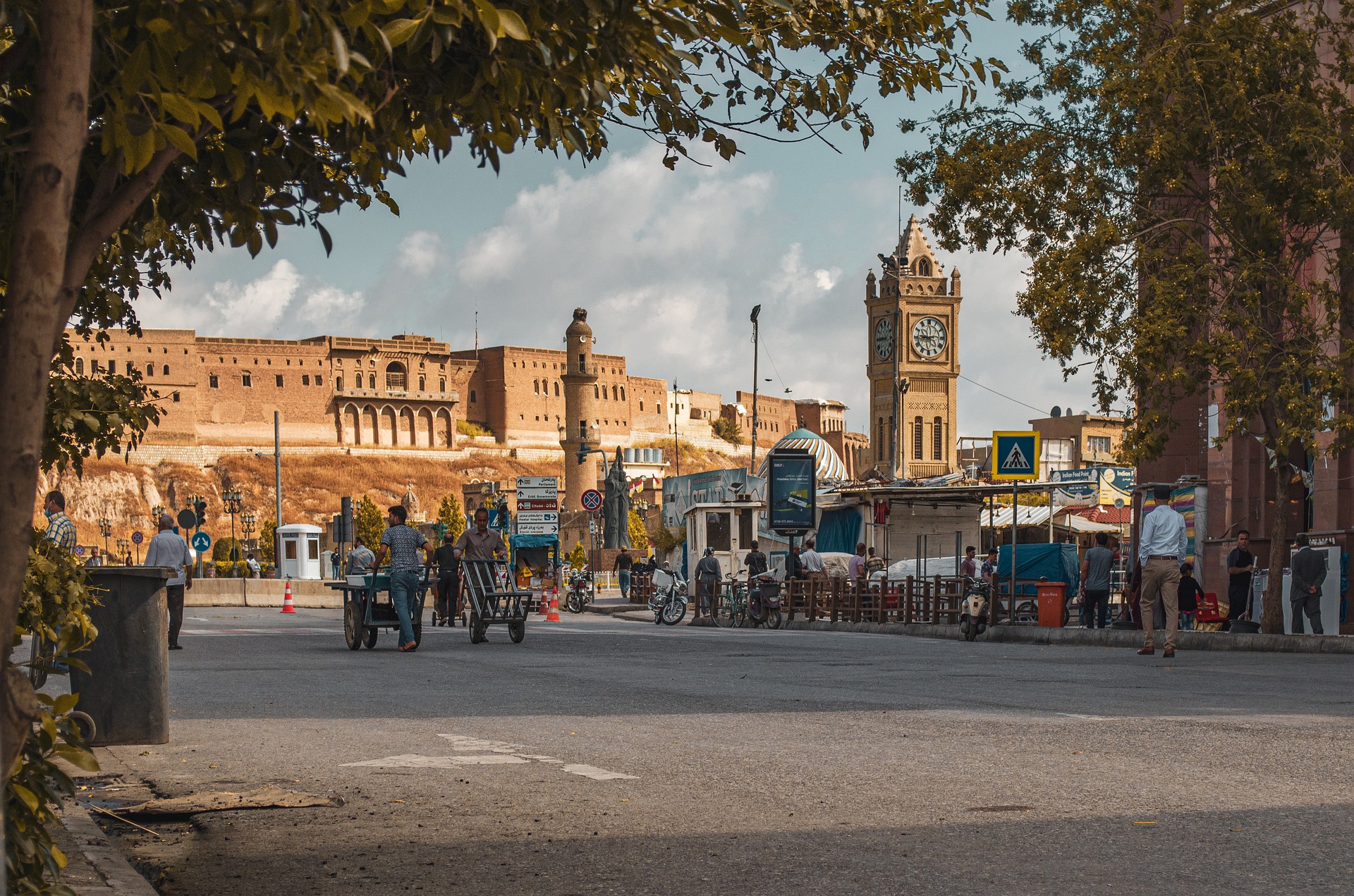
0 comments on “Kurdistan – The usual Madhouse”